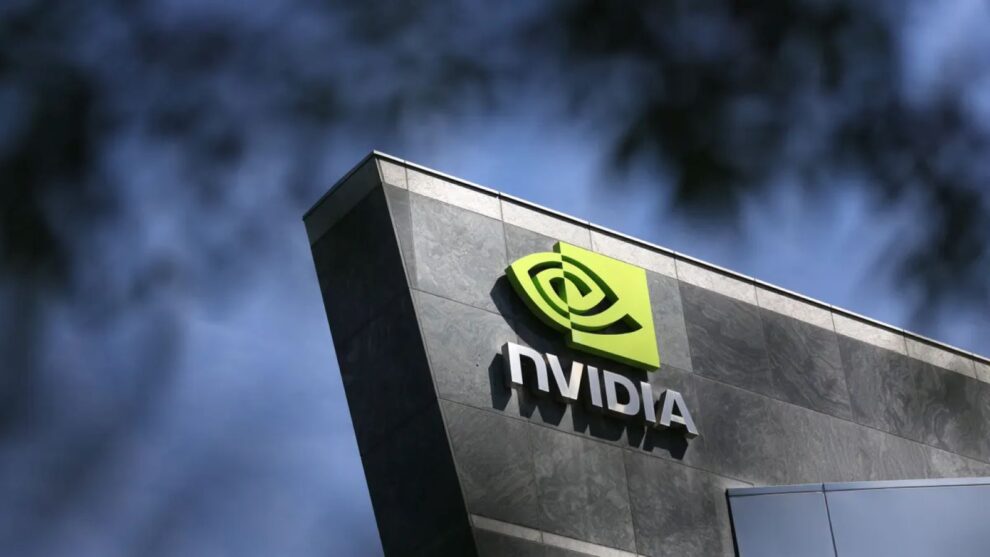Nvidia, a name long synonymous with high-end graphics processing units (GPUs) that power artificial intelligence (AI) and high-performance computing (HPC), is now stepping into the cloud computing space. With new initiatives like Nvidia DGX Cloud and AI cloud services, the company is pushing beyond its traditional role as a hardware supplier. This move places Nvidia directly in competition with major players like Amazon Web Services (AWS), Microsoft Azure, and Google Cloud, potentially changing the dynamics of the cloud market.
Key Takeaways:
- Nvidia is shifting from chip manufacturing to offering cloud computing services, mainly through its DGX Cloud.
- This expansion puts Nvidia head-to-head with established cloud providers such as AWS, Azure, and Google Cloud.
- DGX Cloud gives enterprises direct access to Nvidia’s AI supercomputers, with built-in software and expert support.
- Nvidia is also working alongside cloud providers to host its services, balancing collaboration with competition.
- The demand for AI model training, including large language models (LLMs), is driving Nvidia’s shift into cloud computing.
- Nvidia’s integration from hardware to AI frameworks and cloud services aims to optimize the AI development environment.
- The company has secured significant multiyear cloud service agreements, suggesting rapid growth in this new sector.
Nvidia’s Strategic Pivot to Cloud Services
For years, Nvidia has been the backbone of AI development, providing GPUs that power everything from groundbreaking scientific research to sophisticated machine learning models. But now, Nvidia is making a more deliberate foray into cloud computing, capitalizing on the growing demand for AI infrastructure, particularly for training complex large language models (LLMs) and other compute-heavy applications. With DGX Cloud, Nvidia isn’t just selling chips; it’s offering a comprehensive, managed AI platform that lets companies tap into its high-performance AI supercomputers.
One of the key components of this platform is the Nvidia Grace Hopper Superchip (GH200 NVL32). This combines an Arm-based Grace CPU and Nvidia’s Hopper architecture GPU on a single module, providing up to 20 terabytes (TB) of shared memory to handle large-scale workloads. The GH200 NVL32 platform can scale up to 32 interconnected superchips, enabling hyperscale AI applications. This robust capability underscores Nvidia’s ambitions to provide a ready-to-use AI development environment at scale.
The DGX Cloud Offering
Nvidia DGX Cloud is designed as a fully managed AI platform for the most demanding workloads. It offers optimized, accelerated computing clusters in the cloud with flexible terms. Customers also gain access to Nvidia’s AI Enterprise software suite, which includes AI frameworks, tools, and pre-trained models, alongside direct support from Nvidia’s experts. This comprehensive approach aims to simplify the complexities of setting up and managing AI infrastructure.
A key element of this offering is the Nvidia GPU Cloud (NGC), which provides a catalog of GPU-optimized software, including AI frameworks, pre-trained models, and industry-specific tools. The goal is to make Nvidia’s powerful computing resources more accessible to developers, allowing them to take full advantage of the platform’s capabilities without having to manually configure everything.
Shifting Dynamics in the Cloud Market
The cloud computing market is massive, with an estimated worth of $752.44 billion in 2024, and it’s expected to grow to $2.39 trillion by 2030, growing at a compound annual growth rate (CAGR) of 20.4%. AWS, Microsoft Azure, and Google Cloud dominate the sector, collectively holding over 60% of the market share. AWS leads with about 31%, Azure follows with 20%, and Google Cloud holds 12%. These cloud giants have invested heavily in their data center infrastructure, offering a broad range of services, from infrastructure as a service (IaaS) to platform as a service (PaaS) and software as a service (SaaS).
Nvidia’s entrance as a direct cloud service provider creates a more complicated competitive landscape. In some cases, Nvidia’s cloud model functions as a “frenemy” relationship with these large providers. For example, cloud providers may purchase and manage Nvidia’s hardware, which they then lease back to Nvidia, who rents it out to customers. This allows Nvidia to expand its cloud offerings without the significant capital expenditure of building new data centers.
This dynamic puts additional pressure on AWS, Azure, and Google Cloud, who are already major customers of Nvidia’s GPUs but are also developing their own custom AI chips to reduce their reliance on Nvidia. Google’s Axion, an Arm-based server chip launched in April 2024, is one such effort aimed at making cloud computing more cost-effective.
Despite these challenges, Nvidia still holds a significant technological lead in AI accelerators. Its Blackwell platform, for example, remains in high demand, with reports indicating that Nvidia has secured manufacturing capacity for it through 2026. This demand highlights the company’s ongoing influence in the AI space.
Partnerships and Ecosystem Building
Nvidia is also focused on building a collaborative ecosystem. It has formed strategic partnerships with cloud providers, including Oracle and Microsoft, to host its DGX Cloud services. These alliances allow Nvidia to broaden its reach and make its AI supercomputing resources available on multiple cloud platforms.
One notable collaboration is with AWS, which expanded its partnership with Nvidia in November 2023. AWS now offers the Nvidia GH200 Grace Hopper Superchips, integrated with multi-node NVLink technology, and hosts Nvidia’s DGX Cloud services. This partnership underscores how Nvidia is combining its cutting-edge hardware with AWS’s scalable cloud infrastructure.
Additionally, Nvidia is enhancing its support for Google’s Vertex AI and JAX framework using its GPUs. The company’s Blackwell platform is also connecting with AWS, Microsoft Azure, and Google Cloud, ensuring that its AI resources are optimized across various multi-trillion parameter LLMs. These collaborations show that Nvidia understands the value of partnering with existing cloud giants to accelerate AI adoption, while still positioning itself as a service provider.
Nvidia is also expanding its network of Nvidia Cloud Partners (NCPs), offering high-performance computing infrastructure for AI applications. Companies like CoreWeave and Lambda, in which Nvidia has invested, further cement its standing in the AI cloud ecosystem.
The AI Factories Vision
Nvidia’s CEO, Jensen Huang, has repeatedly spoken about his vision for “AI factories” — specialized data centers designed specifically for AI production. Nvidia DGX Cloud is a crucial part of this vision, offering businesses an optimized platform for building and scaling their AI initiatives.
Financially, Nvidia’s cloud-focused strategy is paying off. The company’s data center revenue reached $39.1 billion in Q1 of fiscal year 2026, a 73% increase from the previous year. While Nvidia hasn’t disclosed exact figures for DGX Cloud, it revealed $10.9 billion in multiyear cloud service agreements in its latest fiscal year, up from $3.5 billion the previous year. This signals strong interest in Nvidia’s cloud services and highlights rapid growth in this area.
Challenges and Future Outlook
While Nvidia’s cloud business is gaining momentum, the competition remains fierce. AWS, Azure, and Google Cloud have established their positions, with vast customer bases and broad service offerings that extend well beyond AI-specific compute. These cloud giants are also continuing to invest heavily in AI and custom chip development, intensifying the battle for AI workloads.
However, Nvidia’s strength lies in its specialized hardware and comprehensive AI software stack. Tools like CUDA and cuDNN are deeply integrated into the AI development community, providing Nvidia with a distinct advantage. As demand for faster and more efficient AI development ramps up, Nvidia’s end-to-end offerings could become the go-to solution, particularly for companies at the cutting edge of AI research.
Ultimately, Nvidia’s foray into cloud computing represents a clear strategy to dominate the AI space — both through direct cloud offerings and partnerships with the biggest cloud providers. The competition between Nvidia and the tech giants will undoubtedly shape the future of AI and cloud computing.
Frequently Asked Questions (FAQ)
Q1: What is Nvidia DGX Cloud?
A1: Nvidia DGX Cloud is a fully managed, high-performance AI supercomputing service offering enterprises on-demand access to Nvidia’s accelerated computing infrastructure and software stack in the cloud. It’s designed for training large, complex AI models and generative AI applications.
Q2: How does Nvidia DGX Cloud compete with AWS, Azure, and Google Cloud?
A2: DGX Cloud competes by offering AI-specific cloud resources that are optimized for Nvidia GPUs and AI software. While AWS, Azure, and Google Cloud also provide AI computing services, DGX Cloud focuses on providing a streamlined, integrated environment specifically for advanced AI development.
Q3: What specific Nvidia technologies are central to its cloud computing strategy?
A3: Key technologies include Nvidia’s DGX systems, the Grace Hopper Superchip (GH200), the Blackwell platform, and the Nvidia AI Enterprise software suite, which includes CUDA, cuDNN, and various AI frameworks and tools. These are crucial for powering AI workloads in the cloud.
Q4: Does Nvidia own its own data centers for DGX Cloud?
A4: Nvidia typically partners with cloud providers like Oracle, Microsoft, and AWS to host its DGX Cloud services, allowing Nvidia to expand its cloud presence without having to build its own data centers.
Q5: What are the benefits of using Nvidia DGX Cloud for AI development?
A5: Benefits include access to powerful, optimized AI infrastructure, integrated Nvidia AI software, and expert support. This helps accelerate AI model training, simplifies setup, and ensures consistent performance for demanding AI workloads.








